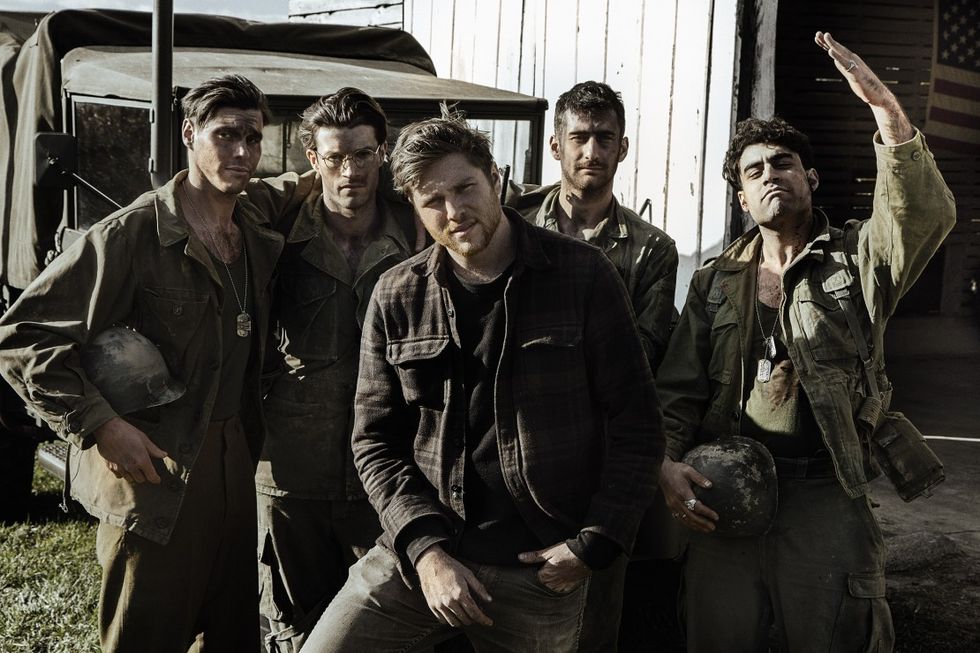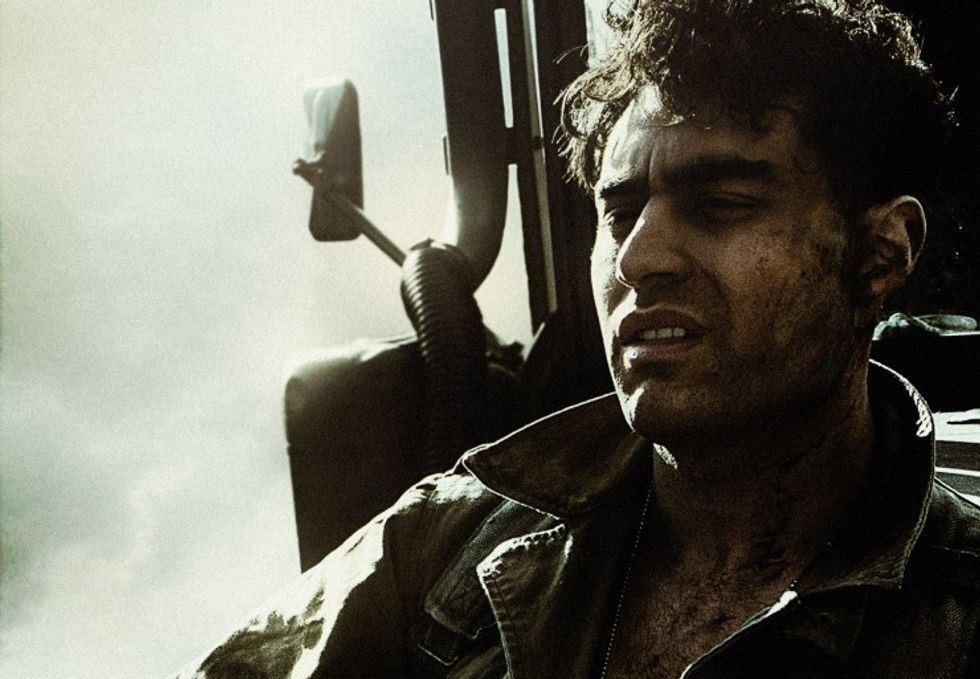'Overcommit & Deliver': Skyler Lawson on His Ambitious 16mm WWII Short 'LEFT HAND'
Adapting a story told from a WWII veteran's personal account, the short takes on tough subject matter with a minimalist production modality.
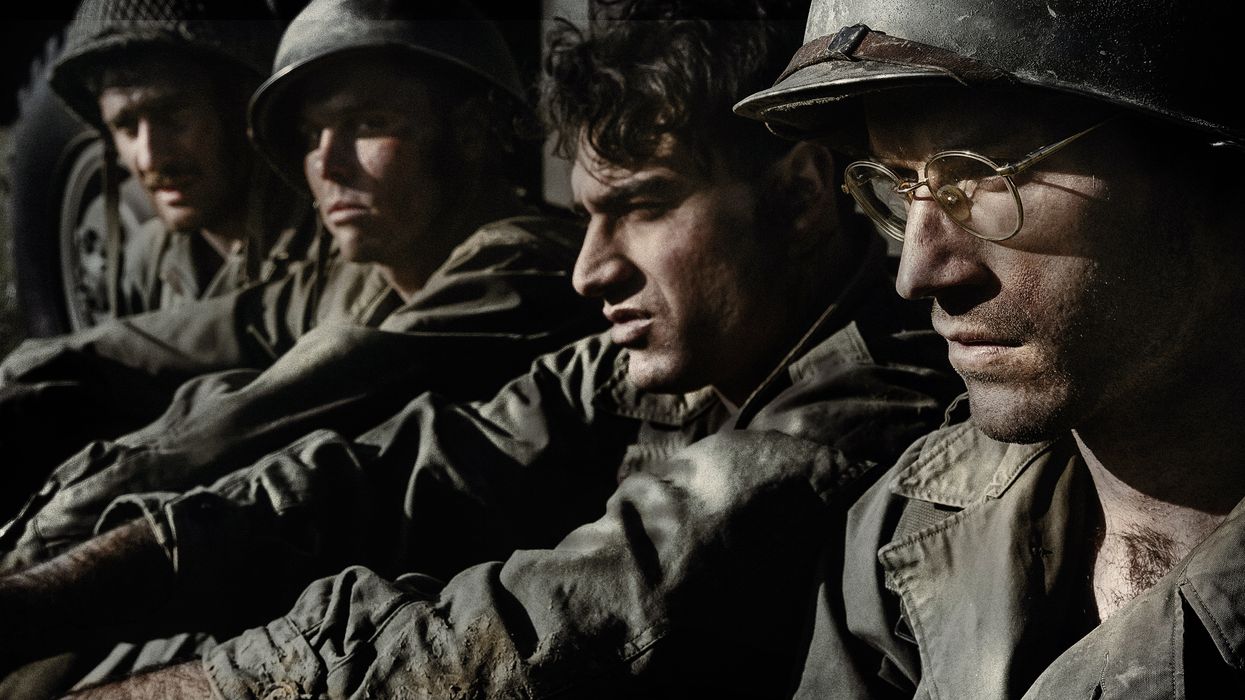
Skyler Lawson's short films are always ambitious: setting out to accomplish big themes in a short amount of time and with very little resources—yet he always succeeds on making his films stand out. Lawson's latest directorial effort is LEFT HAND, a micro-budget WWII short depicting a small unit struggling with internal and external demons in the wake of being deployed into combat in Luzon. Based on a true story told to Lawson by 90 year-old WWII veteran George Price, we get a glimpse into the divisions of men within the military in 1944 and the competition for ownership over the American ideal. We spoke to director/composer Lawson on adapting dialogue directly from a personal account, preparing actors to do good work and working within limitations to achieve period accuracy.
Before we get to the interview, here is the world premiere of LEFT HAND.
"As a young director, go with your gut casting wise. If the actor feels like the right person, go with it, because once the camera is rolling, they are the boss."
NFS: How did you go about creating story and dialogue from George Price's first hand account of his memories at war?
Lawson: When George Price told me the story of when he arrived at Camp Roberts in California and the culture shock of the East coast boys and the West coast boys meeting each other for the first time, it felt very symbolic to me in terms of what America is going through now. These guys were all there trying to prove to each other that they are American. The guys on the West coast were always bare knuckle boxing and had handfuls of rings, symbolizing their victories. When George talked about violence and racial tension, it felt relevant and like nothing has really changed. I took broad strokes of his story and created these characters.
I spent a lot of time with Price, listened to how he talked, did a lot of historical research and watched documentaries. You don't get to hear banter between guys back then very often, so I just started pulling lines from things I've heard or people I knew, especially older people. Lines, like "You look like the ass end of a mule... Red." I don't know what that means and I don't care, but I know that would feel foreign to a New Yorker. I just wanted to clash these cultures together, I wanted the dialogue to be confrontational and not about explaining things. I just imagined what it would be like to be dropped into their scenario, to try to be a fly on the wall in 1944 and just guess how these people talked. I was guessing a lot but it felt good to me, and when I showed it to George he really responded to it and said that the spirit of that thing was there.
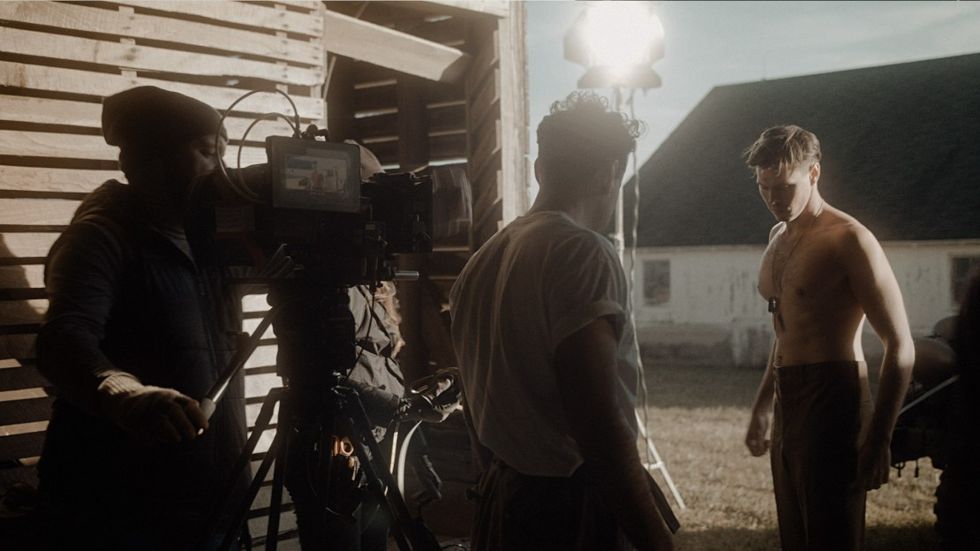
NFS: How did you find your actors and especially the actor who portrays Price?
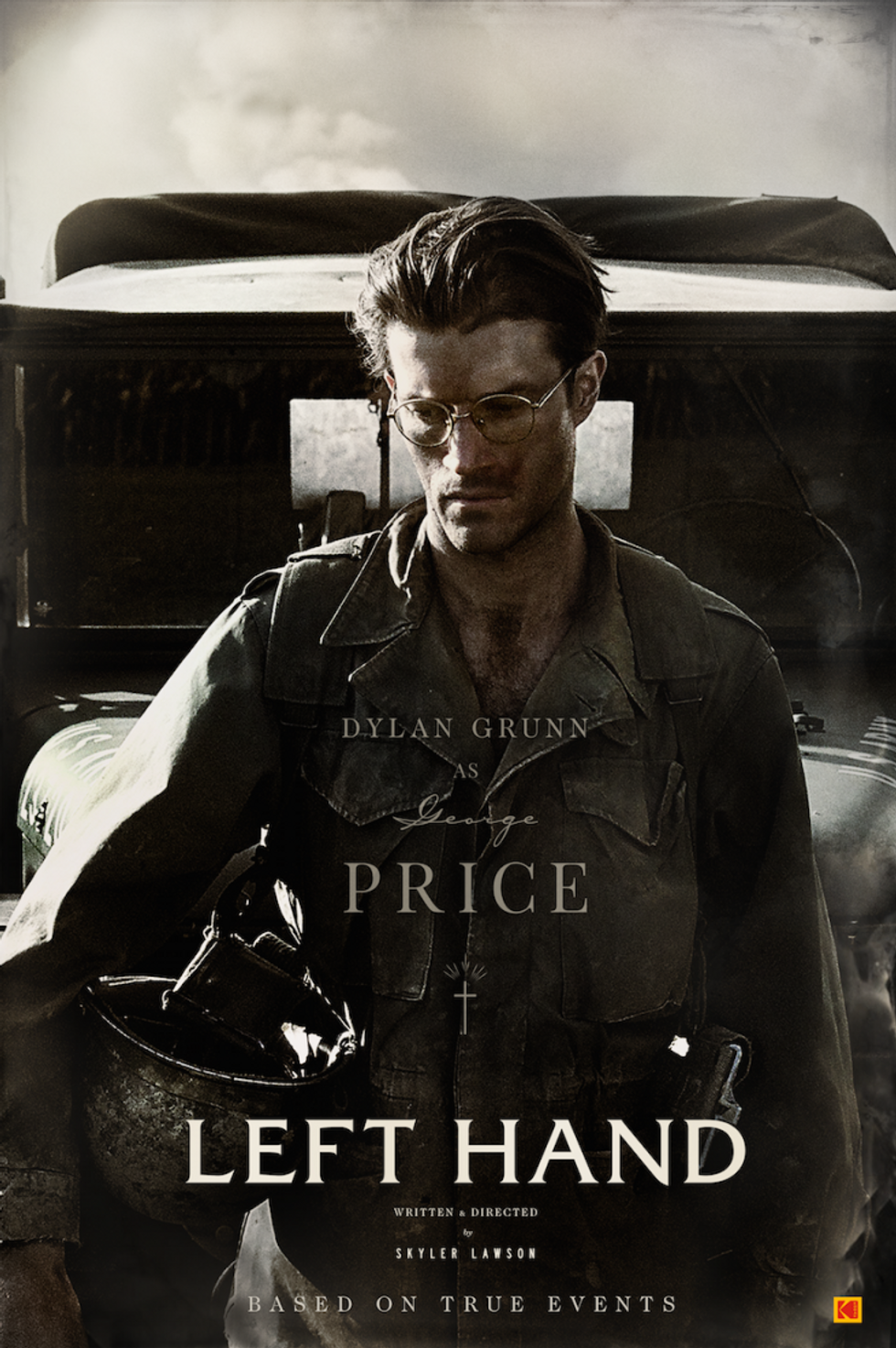
Lawson: I had worked with Grant Schumacher in an earlier film and we stayed friends. Through the years I started hanging out with his actor friends, and the energy they all have around their craft is so alluring, I love it. I remember always seeing them getting out of a class or audition and I remember thinking that these guys have some real talent. When I realized that a feature I'm making wasn't going to happen last year, I put that on hold and wanted to write a short specifically for these New York guys. I didn't audition them I just wrote it for them. They're all good friends and they're really talented.
Dylan Grunn [who plays George Price] was just somebody I got along with right away. Firstly, Dylan looks like the real George Price if you put their photos side by side, so it clicked for me, and honestly If you put the 90 year-old George Price in a room with Dylan you could tell they have the same kind of personality too. It's a really strong presence but a very graceful one too. He has an intelligence in a non-verbal way. Dylan is a natural leader and he led the charge. The guys brought Ronan Colfer into the mix and he was absolutely perfect. It all fell into place in a really lucky way.
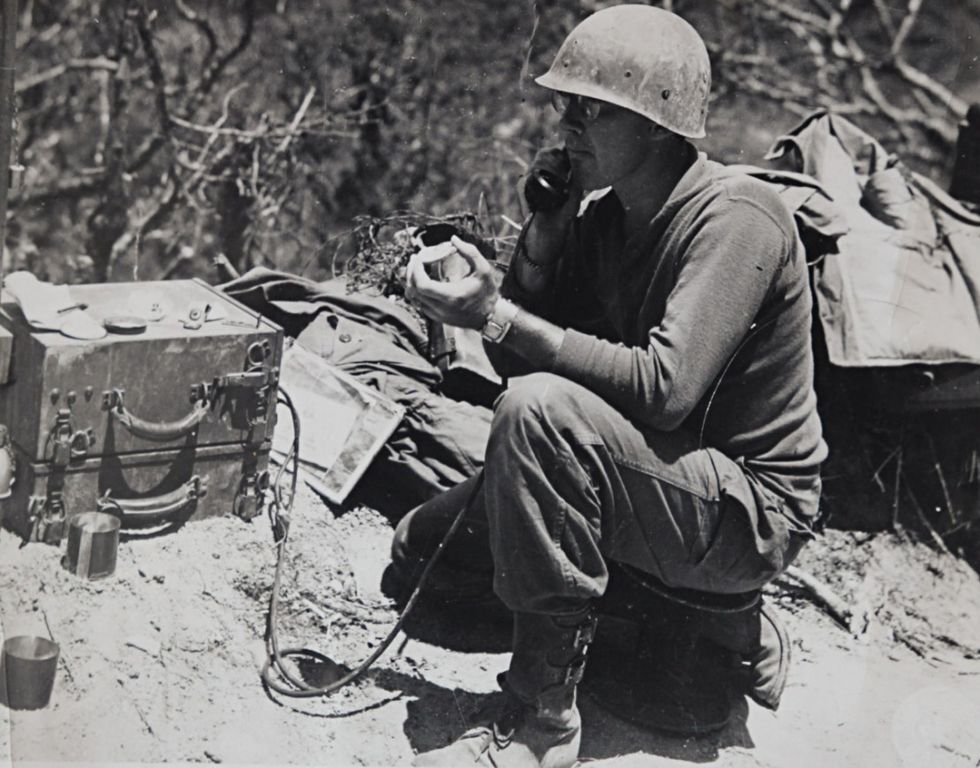
"I didn't have a lot of resources so we took some things off the table, used the bare minimum and used it to our advantage."
NFS: What was your process for choosing the standout shots that heighten or break from the narrative time?
Lawson: When I first started writing the fight scene, I remembered the idea of taking a ring off someone's finger as a trophy. But what do those rings mean? It would hurt so much to give your wedding ring up for a fist fight. The image of giving that ring up needed to feel like a curated moment so it could be a touch point to bring back later in the film. It needed to be very intentional, to tell the audience that it's something to hang on to.
In DeLuca's mind, he had no intention of losing or he wouldn't have bet his wedding ring on it. That's how we all are: we put our ambition above our relationships sometimes. It needed to feel like it had gravity to it, and that's linked directly to the bride towards to end — I wanted people to feel, just for a moment, his loss. The end is a match shot in a way of when he first took off the ring. I wanted to settle on it and make you look at it and not let you look away. Ramiro is a very vibrant and alive character in the film, and I wanted to feel the life taken out of him and the repercussions of a violent act.
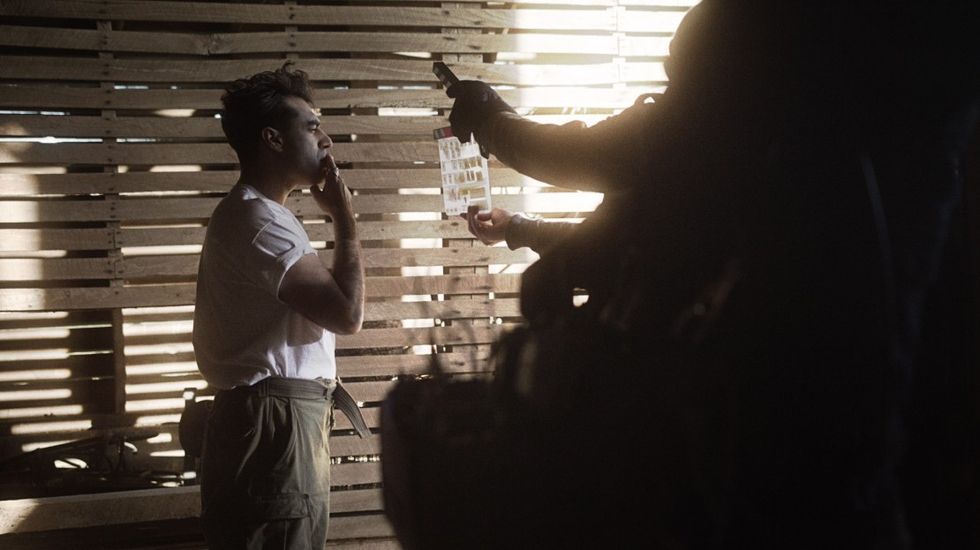
NFS: How did you arrive at the choice to shoot 16mm and creating your WWII aesthetic?
Lawson: Film is my favorite medium so I was always gonna shoot on it. That was a no brainer for me, but the choice to shoot 16mm was a little more nuanced. My regular DP Kassim Norris wasn't available, he was on another job, so he recommended Aaron Webster who stepped in and did an incredible job. I went with 16mm so it had more grit to it and so it felt like an artifact. I was looking at movies like Cool Hand Luke and what kind of coverage they use and how harsh the light was. I wanted it to feel like something done "the old fashioned way." I didn't have a lot of resources so we took some things off the table, used the bare minimum and used it to our advantage. Aaron was on board with that. I didn't want to use wide lenses or steadicam, which is kind of en vogue right now, I just wanted to use our restrictions as a plus and just make that the language of the film.
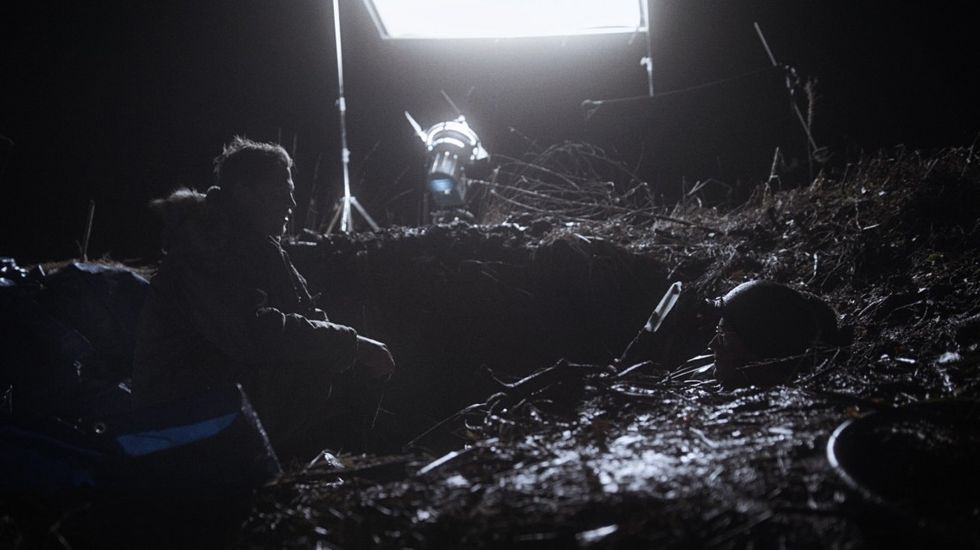
I gave Aaron a shot list but I also wanted to take my hands off the wheel a little bit and let the DP have ownership over his craft, in all respects for everybody on set. The film probably wouldn't have happened without Nicole Lehrman, who is an incredible focus puller, because every shot was so shallow. I had to pull all my trust in these folks. When we're on set there's only a tiny monitor which I don't look at anyways because I want to look at the real performances, so you gotta put your trust in your departments. I am a control freak at times, but as long as we're all running in the same direction then I'm happy.
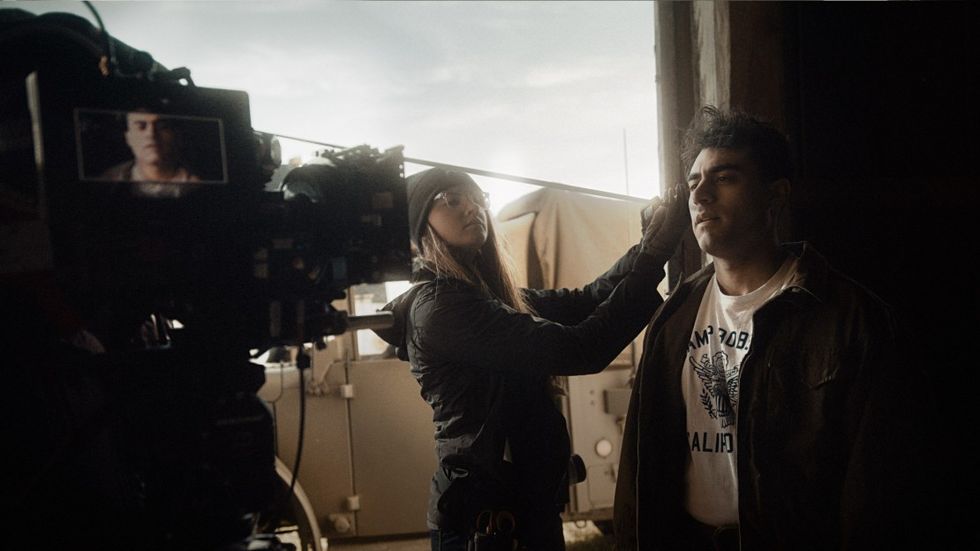
"I thought it was better to buy the real stuff. At the very least the actors can feel the depth behind the garments they're wearing. They're dirty, gross, has bloodstains, has sweat soaked into it, but it's fuel for an actor."
NFS: How did you approach color?
Lawson: We went with flat pass ProRes files and Kassim [Norris] and I just sit down and do the whole film in one sitting. We just go with our hearts and what feels right to us. There's so much information in that celluloid that you're able to push it wherever you want. We shot entirely on tungsten stock, when you warm it back up the skin tones are really tobaccoey and rich. In a film about identity and pride I felt the skin tones needed to pop off the screen.
In the DI Kassim Norris and I wanted to pay homage to Cool Hand Luke, but we never pulled up a reference image. There's so many war films and we didn't want to look like any of them. We just wanted the classic army green to be present all the way and other than that I wanted him to have freedom to do what he wanted. Kodak was incredible for our process. They opened up a lab in Atlanta and they welcomed the fact that I sent the film there. They are pure artisans at what they do. I can't speak highly enough of the Kodak lab in Atlanta. They are at the top of their game, for sure.
"There's a lot of brass in 1940's, and the chords are roughly pulled from some old songs but they're perverted and mangled in ways that they never would have used in 1944."
NFS: How did you bring visual elements together to create 1944, specifically costumes, locations and production design?
Lawson: It was a puzzle of what I had access to, first off. We shot in Indiana because Camp Roberts had a lot of old worn out wooden buildings, so I thought I needed that. I tracked down a WWII truck and a club was gracious enough to let me use it. We just parked it there. I started scouring eBay and military surplus stores to get my hands on the real stuff because it already has the patina of the time and place and sometimes it was cheaper too. The US kept the same pattern through the Korean War and almost the same up to Vietnam as far as helmets go. When I told people it was for a real veteran that I was paying homage to, a lot of folks were really gracious and helped me out.
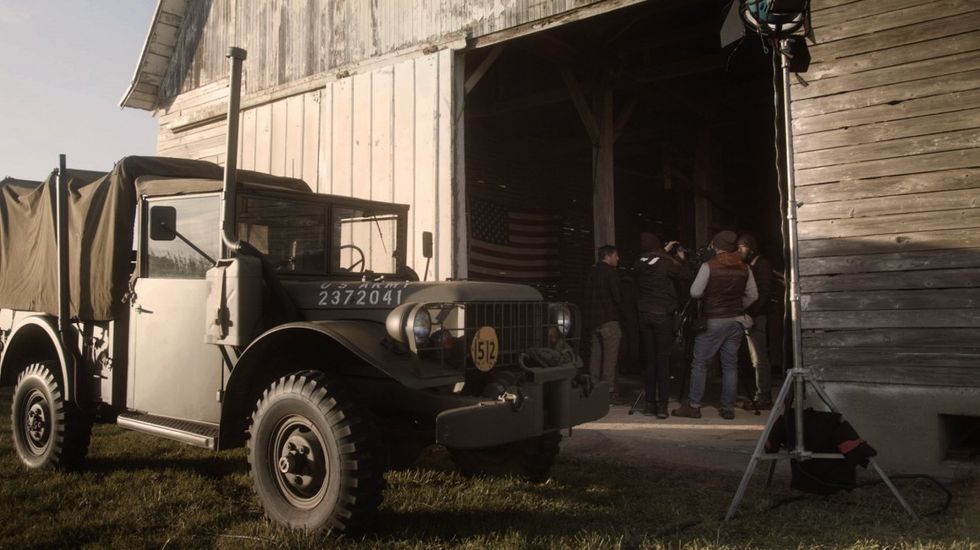
I only bought enough costumes to dress four people and we were swapping out all over the place. I thought it was better to buy the real stuff. At the very least the actors can feel the depth behind the garments they're wearing. They're dirty, gross, has bloodstains, has sweat soaked into it, but it's fuel for an actor. I set the stuff out in the middle of the room and let the boys pick, so they dressed themselves. If you're in battle for a year you're going to personalize yourself.
NFS: You compose your own music on all of your films. How did you choose the tone for LEFT HAND?
Lawson: I went through a lot of period music from the 40's and plucked some instruments from pop music from the time and I misuse them. There's virtual instruments and real stuff as well. A lot of it is samples, but I try to hide it all. Often I just turn the click all the way off and write from my own tempo. When you sit in front of an orchestra there's no click track, the conductor creates the pace. Aaron Smith is a composer and one of my best friends and he's helped me think about music and what it does on a deeper level. He's always pushed me to go for what ignites the biggest reaction from within and to make sure it's servicing the end product. There's a lot of brass in 1940's, and the chords are roughly pulled from some old songs but they're perverted and mangled in ways that they never would have used in 1944.
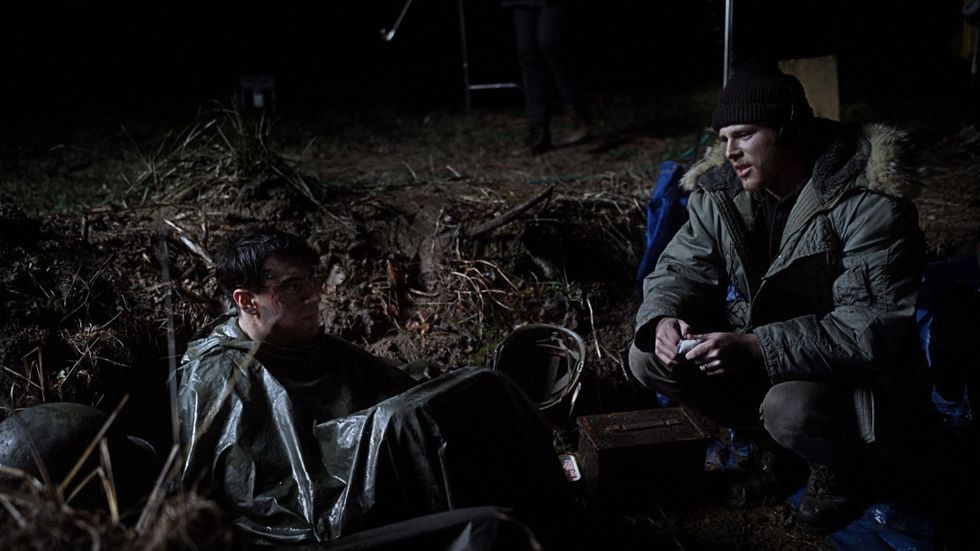
NFS: What lessons did you learn making LEFT HAND?
Lawson: Looking back on it, the directing happened before we even started rolling. It was in the days before when we were on site just hanging out putting skin on the bones. The Script is the bones, they aren't flesh and blood until the actors inhabit the words. Let the actors take full ownership of the characters. As a writer/director you want to have control over everything, but there's nothing more rewarding that giving those words and that situation to an actor and watching them run with it.
Set up a space so they can be free to do their craft because they are literally doing a magic trick in front of your eyes. Some of the best scenes I could've shot happened off-camera before we were even shooting, but the film wouldn't have worked maybe if those moments didn't happen. As a young director, go with your gut casting wise. If the actor feels like the right person, go with it, because once the camera is rolling, they are the boss.
Don't be afraid to overcommit. If you fail it's okay. Overcommit and then deliver. You don't need permission to make something great. I wanted to make this film for this 90 year-old man who served our country — if I made him happy, I'm happy. We got some helmets, dug a few holes in the ground, we made it rain with a garden hose and there you go it's 1944 because everyone was willing to play make believe with me. After George [Price] watched it, he said "I wish my mother was here, because I could never make her understand." And that will never leave my body.
